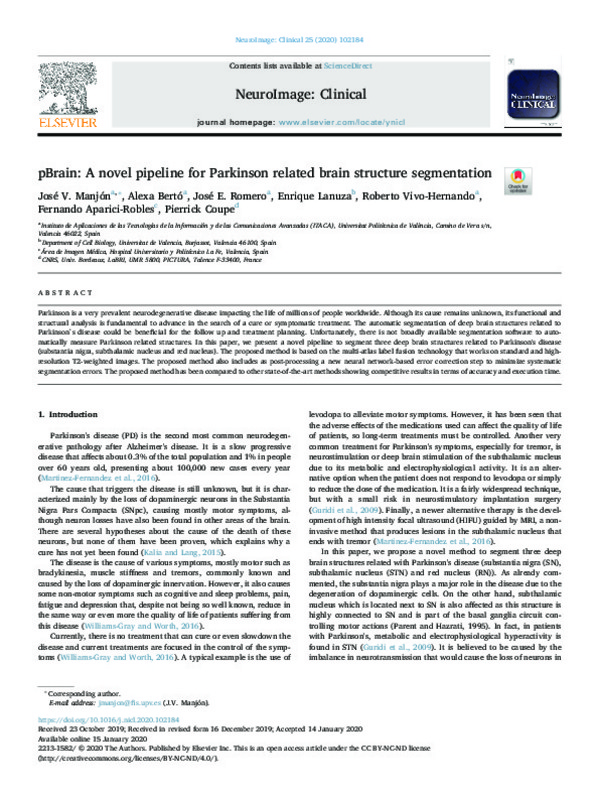JavaScript is disabled for your browser. Some features of this site may not work without it.
Buscar en RiuNet
Listar
Mi cuenta
Estadísticas
Ayuda RiuNet
Admin. UPV
pBrain: A novel pipeline for Parkinson related brain structure segmentation
Mostrar el registro completo del ítem
Manjón Herrera, JV.; Bertó, A.; Romero, JE.; Lanuza, E.; Vivó, R.; Aparici-Robles, F.; Coupé, P. (2020). pBrain: A novel pipeline for Parkinson related brain structure segmentation. NeuroImage Clinical. 25:1-7. https://doi.org/10.1016/j.nicl.2020.102184
Por favor, use este identificador para citar o enlazar este ítem: http://hdl.handle.net/10251/176114
Ficheros en el ítem
Metadatos del ítem
| Título: | pBrain: A novel pipeline for Parkinson related brain structure segmentation | |
| Autor: | Bertó, Alexa Lanuza, Enrique Aparici-Robles, Fernando Coupé, Pierrick | |
| Entidad UPV: |
|
|
| Fecha difusión: |
|
|
| Resumen: |
[EN] Parkinson is a very prevalent neurodegenerative disease impacting the life of millions of people worldwide. Although its cause remains unknown, its functional and structural analysis is fundamental to advance in the ...[+]
|
|
| Derechos de uso: | Reconocimiento - No comercial - Sin obra derivada (by-nc-nd) | |
| Fuente: |
|
|
| DOI: |
|
|
| Editorial: |
|
|
| Versión del editor: | https://doi.org/10.1016/j.nicl.2020.102184 | |
| Código del Proyecto: |
|
|
| Agradecimientos: |
The authors want to thank Dr. Mallar Chakravarty for making accessible the HR MRI data used in the proposed pipeline. This research was supported by the Spanish DPI2017-87743-R grant from the Ministerio de Economia, Industria ...[+]
|
|
| Tipo: |
|









